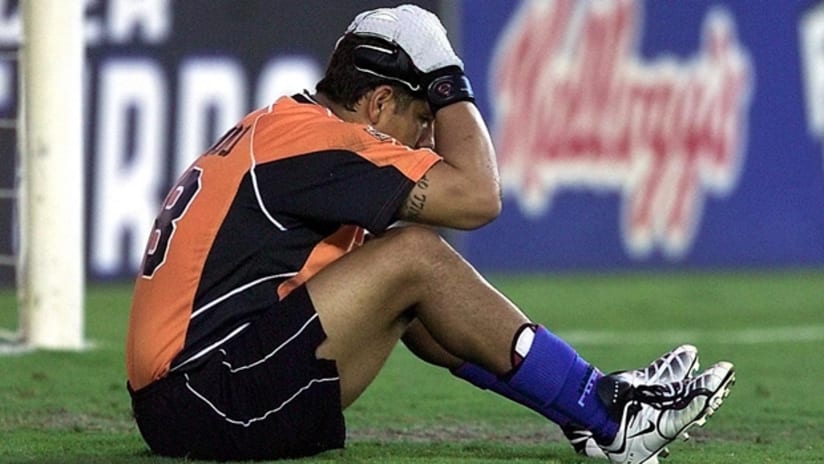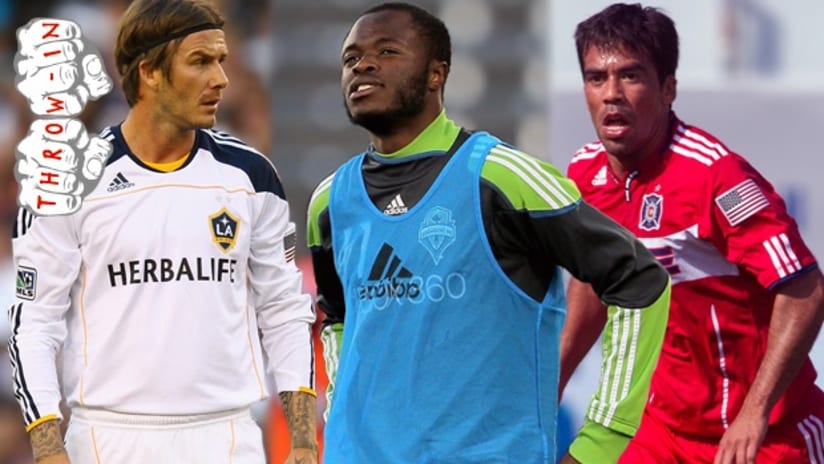It’s all good news during a week in which Major League Soccer unveiled its largest and most ambitious schedule in its history, rejoiced in a major TV deal with NBC, gets set to run the annual Combine and SuperDraft, and looks forward to a season with an unprecedented 19 teams.
Lost in the shuffle is an auspicious anniversary. Sunday will mark exactly 10 years since MLS announced that it was contracting.
On Jan. 8, 2002, the official word came down from league headquarters that, in a unanimous decision by the MLS Board of Governors, the Tampa Bay Mutiny and Miami Fusion were being folded.
"The decision to leave both cities for the 2002 MLS season was extremely difficult," MLS Commissioner Don Garber said in a statement at the time. "I can assure all of our fans that we worked tirelessly to find a plan that would have allowed us to remain in both markets.”
It’s hard to envision such a dire time amid all the positive developments today, but flash back a decade. The economy was reeling in the wake of 9/11. Professional sports were hit particularly hard – Major League Baseball was deep in discussions as to whether it would contract as well, nearly eliminating the Montreal Expos and Minnesota Twins.
For MLS, that same decision wasn’t unexpected, but it was still a tough one. Tampa Bay were without local ownership, operated entirely by the league, while Miami had floundered in their market playing their games in Ft. Lauderdale. MLS was losing money at the time, and immediate action had to be taken. And the line was drawn with the weakest links.
In the immediate aftermath, the effects were shocking to those involved. No official announcements were made by the clubs to their players – most of them found out second-hand that they were out of work.
Steve Ralston had just completed his sixth season with Tampa Bay, and had just built a new house and celebrated the birth of his first child, daughter Anna. He remembers that he first heard the news immediately after he and a few of his Mutiny teammates were participating in an informal offseason workout.
“We’d heard the previous year there was a possibility of maybe moving to Rochester, [N.Y.],” the current Houston Dynamo assistant recalled to MLSsoccer.com. “But this was early January, and a bunch of us guys were out training, thinking there was no way they’d make a big decision this close to the [new] season. We got back in our cars, and we all had messages from friends telling us they heard the team had folded.”
Meanwhile, Miami goalkeeper Nick Rimando, then just 22 and about to begin his third MLS season, was off in Claremont, Calif., participating in his first US national team January camp. Similarly, he heard the news by word of mouth as it made its way through camp.
“There was a little bit of panic,” the current Real Salt Lake backstop admitted to MLSsoccer.com on Thursday from Phoenix, where he is again in USMNT camp. “My first reaction was, ‘I don’t have a job anymore, and I want to continue to play. I’m starting to get recognized, I’m in January camp – and I don’t have a team.’”
In the short term, the loss of two teams reversed the dilution of talent from which MLS at the time had been suffering a bit. All Miami and Tampa Bay players were made available in subsequent allocation and dispersal drafts.
Ralston went to New England, along with Mutiny teammate Mamadou Diallo. The Revs also picked up Miami's Alex Pineda Chacón, Carlos Llamosa and Jim Rooney, joining ex-Fusion defender Jay Heaps (above left, with Ralston) who went north in a trade the prior season. All told, the six new players formed the early genesis of the Revolution dynasty of the mid-2000s.
Rimando, meanwhile, went to D.C. United, where he eventually won an MLS Cup. Those drafts also saw Pablo Mastroeni, Kyle Beckerman and Chris Henderson go to Colorado, Tyrone Marshall to LA and Preki to Kansas City, among others.
The rest, as they say, was history. Most of the players landed on their feet and became key figures for their new teams. But there’s a slightly more ironic twist that often gets forgotten amid what some considered one of the darkest days for MLS. Without that decision – and the initiatives that were put in place in concert with contraction – the league would not be where it is today.
In that same announcement, MLS also unveiled a series of initiatives that were huge investments in the league’s future: a five-year extension of its broadcasting deal with ABC and ESPN, the formation of Soccer United Marketing, the acquisition of the TV rights for the 2002 and ’06 World Cups and an incentive system for owners to build soccer-specific stadiums.
“It took some time for those investments to bear fruit,” MLS president Mark Abbott told MLSsoccer.com on Thursday, “but we made a point for people to know that this was not a decision to retreat – it was decision of investment in our future.”
Even more ironically, the board also made a unanimous decision to plan for expansion in the coming years. Those changes, says Abbott, along with the performance of the US national team in that summer’s World Cup, made for a banner 2002 for the league, and represented a huge rebound in its financial outlook. The following year was similarly healthy and, in 2004, plans were laid for the additions of Real Salt Lake and Chivas USA in 2005.
“Ultimately, to get where we wanted to go, we knew we had to grow the league beyond 10 teams,” Abbott said. “There is no question in my mind that without [those decisions in 2002], the league would not be where it is now.”
And that is clearly the last instance of reduction by MLS. In 2002, the league had only three owner-operators for its 10 franchises. Now there are 18. Back then, there was just one soccer-specific stadium. This season, the league will add its 14th. In ’02, there was just one national TV partner; in 2012, there are four. The list of comparisons goes on and on.
When MLSsoccer.com caught up with Arsenal chief executive and former MLS deputy commissioner Ivan Gazidis in London in November, he was quick to point out how astronomically far the league has come in a decade.
“I was there in 2001,” he said, recalling a leaner time. “And believe me, nobody was thinking this would be a 19-team league. There are diverse ownership groups, record attendance, new TV contracts and strong, deep marketing relationships. All these things were completely unforeseen 10 years ago.”
Kind of funny when you think about it. Making the league smaller eventually made it get much, much bigger. Sometimes you’ve got to go backwards to go forwards.
Jonah Freedman is the managing editor of MLSsoccer.com. “The Throw-In” appears every Thursday.



